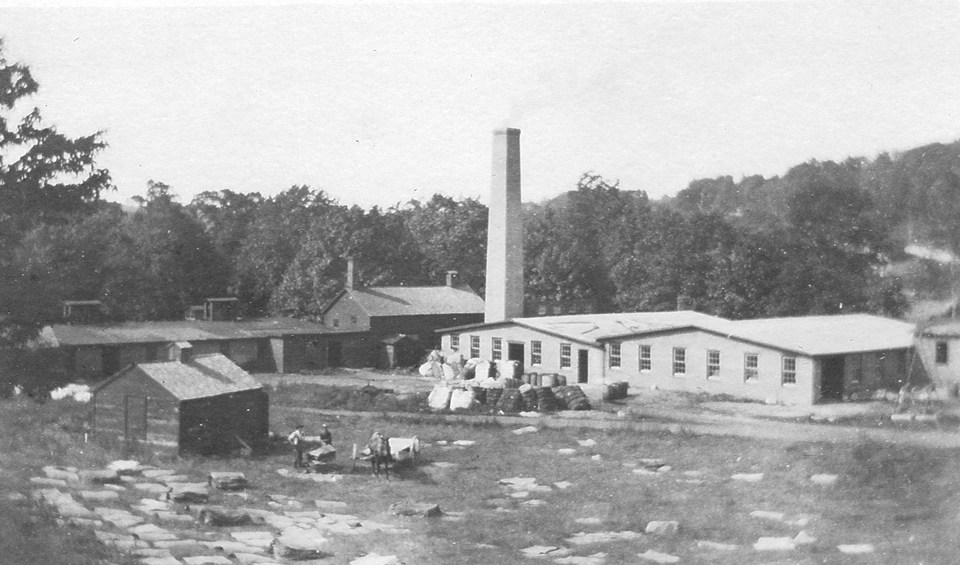In 1889, Fred Case built a paper mill on the Hop River in Andover. In doing so, Case not only created a family business that prospered in town for generations but also contributed to a legacy that had witnessed Connecticut grow into the leading supplier of paper in the nation.
Connecticut Leads Paper-making Industry
Germantown, Pennsylvania, became the home of the first paper mill in the America in 1690. Future mills established themselves near large industrial areas in the 19th century, until the expansion of railway lines allowed production to move to more remote regions containing ample supplies of wood pulp and waterpower. Andover became one of these regions.
Andover followed in the tradition of Connecticut paper-producing towns like Norwich, Seymour, Windsor Locks, and East Hartford. Norwich had started making paper in 1766 and helped Connecticut become the leading paper producer in the United States by 1840. Throughout the course of the 19th century, paper mills popped up all over the country, expanding in number from fewer than 100 in 1800 to roughly 1,100 by 1900. Andover entered into the paper business at end of the century, long after the industry had established its roots.
Case Paper Mill
In Andover, engineers utilized a system of dams and canals to bring water to a 24-horsepower water wheel used to power the plant. The mill met with immediate success and by 1900 was the town’s largest employer. Men worked 12 hours per day in the mill, making approximately $1.25 each day.
Unfortunately for the Case family, they lost their paper mill to fires numerous times. In February of 1916, the mill burned to the ground after a fire started around the driers and quickly spread among the machinery and paper stock. The brothers rebuilt but lost their enterprise to fire two more times by 1928. Each time, the Case enterprise again rose from the ashes.
The Great Depression hit the area hard and in 1934, after surviving a 10-day labor strike, the company reduced the number of working shifts available from 2 to 1 and cut their labor force from 28 to 23. Further cuts soon followed and the company eventually had to cease operations altogether. Today, the town uses some of the mill’s buildings to house equipment.









